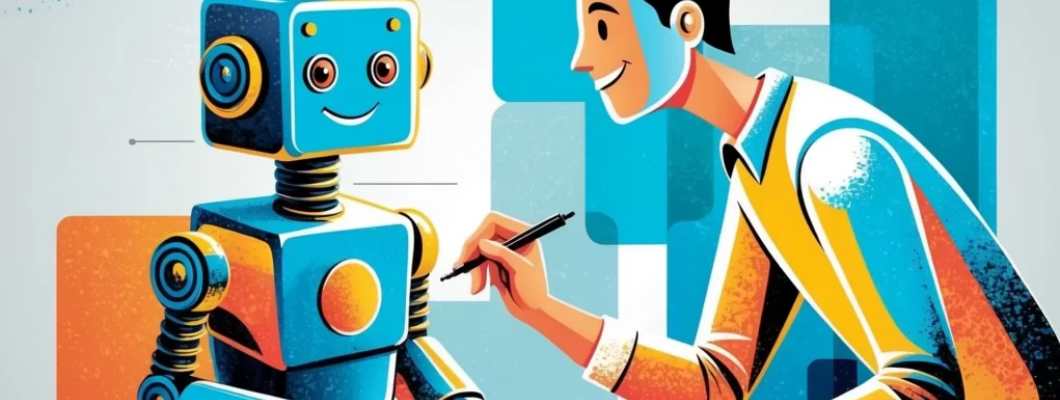
Introduction
The graphic design industry is experiencing a transformative shift, largely fueled by the rise of artificial intelligence (AI). Once dominated by manual processes and time-intensive tasks, the creative workflow is now evolving into a more intelligent, efficient, and collaborative environment. AI isn't here to replace designers—it’s here to enhance their capabilities. By automating repetitive tasks, generating design suggestions, and enabling content personalization at scale, AI allows creatives to focus more on strategy, storytelling, and innovation.
Today’s AI-powered tools can handle everything from image enhancement and layout alignment to generating unique visuals based on text prompts. These advancements are helping designers produce high-quality content faster and with greater consistency. For freelance designers, agencies, and in-house teams alike, integrating AI into the creative process can mean faster turnaround times, increased productivity, and more impactful visual communication.
AI also bridges the gap between technical and non-technical users, making design more accessible across industries. Whether you're building social media graphics, campaign visuals, or branded assets, understanding how AI reshapes workflows is crucial for staying competitive. As digital content demands continue to grow, embracing AI is no longer optional—it’s a strategic advantage for forward-thinking creatives and businesses.
1. Automating Repetitive Design Tasks
AI’s most immediate benefit in design is automating repetitive tasks, saving valuable time and effort. Tools like Adobe Firefly, Canva’s Magic Resize, and Figma’s AI plugins handle functions such as resizing assets for various platforms, applying consistent color schemes, and maintaining typography standards across campaigns. Common time-consuming tasks—like background removal, object detection, and layout alignment—can now be completed with just a click. This not only accelerates the design process but also reduces the risk of human error, allowing designers to focus more on creativity and strategy while ensuring faster, more consistent results across all visual assets.
Key Benefits:
Time savings on bulk edits and asset generation
Increased accuracy and brand consistency
More time for strategic and creative thinking
2. Smart Design Suggestions
AI-powered design tools are getting smarter at recognizing design intent and aesthetics. Platforms like Adobe Sensei and Figma’s AI plugins now offer intelligent suggestions for layouts, color palettes, and font pairings, tailored to user inputs or brand guidelines. These insights are drawn not just from preset rules but from training on millions of high-performing designs. Adobe Sensei delivers real-time recommendations for color, composition, and imagery, while Figma’s AI assists in selecting UI components based on user behavior and context. This speeds up prototyping and enhances design quality, making the creative process faster, more intuitive, and aligned with user and brand needs.
Impact on Workflow:
Reduced design decision fatigue
Better starting points for ideation
Enhanced collaboration with non-designers
3. Text-to-Image and AI-Generated Visuals
Generative AI tools like DALL·E, Midjourney, and Adobe Firefly are transforming how designers create visual assets. Using simple text prompts, designers can generate custom illustrations, textures, and concept art in seconds, eliminating the need to rely solely on stock images or time-consuming manual design. This innovation unlocks new creative possibilities, making it easier to produce unique and tailored visuals quickly. It’s especially valuable for rapid prototyping, concept development, and personalized campaigns, allowing designers to explore ideas faster and more efficiently while pushing the boundaries of traditional design workflows.
Use Cases:
Campaign mockups
Custom graphics for social media
Quick iteration of creative concepts
4. Enhanced Personalization at Scale
Personalization is key in modern marketing, and AI makes it easier to tailor visuals for different audience segments. AI tools can generate multiple design variants based on data inputs like demographics, behavior, or user preferences.
For example, platforms like Creatopy and Bannerbear use AI to create thousands of ad creatives in minutes, customized for different regions, languages, or audience groups. This allows brands to maintain visual consistency while scaling campaigns globally.
Resulting Benefits:
Increased campaign relevance
Better engagement and click-through rates
Streamlined localization workflows
5. Natural Language Design Interfaces
Thanks to generative AI, designers can now use plain English to create or modify designs. Tools like Microsoft Designer or Canva’s Magic Write allow users to describe what they want, like "create a minimalist Instagram post with pastel colors and bold text"—and instantly see results.
This bridges the gap between non-designers and professional tools, enabling marketing teams, small business owners, and entrepreneurs to create quality content without formal training.
Advantages:
Democratization of design tools
Faster design iterations and approvals
Reduced dependency on creative bottlenecks
6. Smarter Collaboration and Workflow Integration
AI is also improving team collaboration by integrating into project management and workflow tools. AI chatbots in platforms like Notion, ClickUp, or Slack can help summarize creative briefs, suggest design timelines, or even tag teammates based on workload or project type.
Design feedback is becoming more intelligent as well. AI can flag design inconsistencies, ensure brand guideline adherence, or even provide accessibility feedback, helping teams maintain quality across versions and stakeholders.
Enhanced Team Benefits:
Streamlined feedback loops
Automated design QA
Better resource allocation and time tracking
7. Ethical Design and Creative Control
While AI opens up new possibilities, it also raises important questions about ethics, authorship, and originality. Designers need to be aware of how AI-generated content is sourced, ensuring that tools respect copyright laws and ethical standards.
Designers are now becoming curators and editors of AI output, bringing human judgment, empathy, and storytelling to guide machine-generated content. The best results happen when AI assists creativity, not replaces it.
Considerations:
Verify AI training data sources
Maintain creative integrity and brand voice
Use AI responsibly and transparently
Conclusion: AI as a Creative Partner
AI is revolutionizing the graphic design workflow—not by eliminating creativity, but by amplifying it. By automating routine tasks, generating fresh ideas, and enabling smarter collaboration, AI empowers designers to focus on what matters most: delivering impactful, original, and user-centered visual experiences.
As we move into 2025 and beyond, staying informed and adaptable will be key. Embracing AI tools today means being better prepared for the future of design, where human creativity and machine intelligence work hand in hand.

Leave a Comment